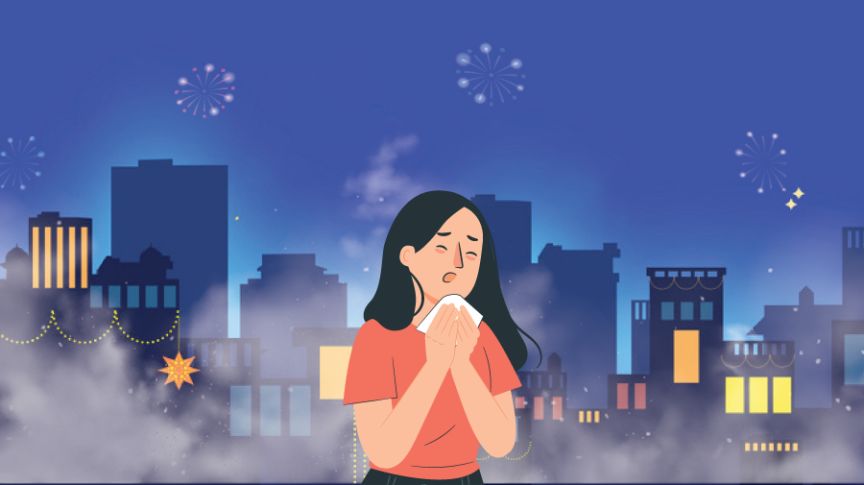Learn why leading HR professionals trust ekincare! Explore Now

Even before the COVID-19 pandemic, respiratory illnesses were not uncommon among the global population. Across the world, the risk of contracting these illnesses grows higher due in part to the firecrackers used during the celebration of various events such as 4th of July celebrations in the USA, or Diwali celebrations in India.
Even ten years ago, medical professionals and experts were warning people of the health risks firecrackers bring with them. According to Dr Sham Sunder Raj, a Hyderabad-based pulmonary specialist, 26% of otherwise healthy people showed increased symptoms of coughing, wheezing and breathlessness, specifically during and after Diwali celebrations. There was a yearly growth in the number of people suffering from respiratory illness due to external factors.
Now, COVID-19 presents an extremely high number of people worldwide who are facing problems with breathing post-infection. Combined with standard external factors such as air pollution and firecrackers, this creates a recipe for disaster.
Firecrackers are made up of various materials that interact with each other to create the beautiful sparks and festive mood of Diwali. However, this beautiful light show has ingredients that turn one's health into an ugly business.
Every year, bursting firecrackers raises the levels of Sulphur Dioxide by up to 200 times the "safe" levels as described by the WHO. Apart from Sulphur Dioxide, levels of other harmful gases such as Carbon Monoxide, Manganese, and Cadmium also increase in the atmosphere, causing several respiratory illnesses. Moreover, the added pollutants in the atmosphere also contribute to smog and higher risks of asthma attacks.
These pollutants and toxic gases do not dissipate from the atmosphere quickly. It is a long process, usually taking up to 4 months, which is 1/3rd of the year! It is easy for people to succumb to breathing issues within this long period.
Here are a few tips from Dr Harish Chafle, Global Hospitals' Senior Consultant of Pulmonology & Critical Care to deal with air pollution during Diwali:
While celebrating festive occasions is a great way to honour traditions and have fun, health should also be a concern. Firecrackers and other harmful pollutants make life difficult for sufferers of respiratory illness, and can often cause more harm than good. It is an urgent need for everyone to realise that bursting firecrackers affects not only the environment but the health and well-being of their fellow citizens. Keeping all of this in mind, it is in everyone’s best interests to reduce the number of firecrackers that are burnt, in order to lessen their harmful effects on the world at large. Reaching out to a trusted doctor can also be beneficial to prevent any health issues.
Click here to learn how ekincare's telemedicine services can help employees keep their health in check.